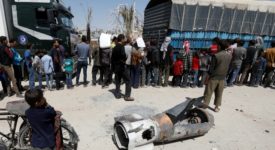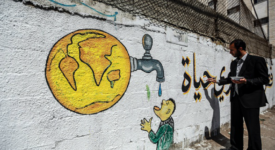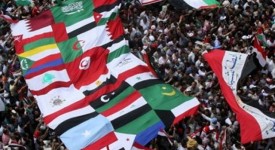Gender relations and women’s rights are linked not only to economic development and democracy but also to security and the regional order in the MENA region. Mainly after the attacks of 11 September 2001 and the 2011 Arab uprisings, the Middle Eastern wars and conflicts have had a profound effect on women status and gender in the region. Specifically, they led to an assertion of “traditional” gender relations and the reaffirmation of collective identities, both sectarian and national, in which women are used as symbols.
Yet, such a viewpoint creates bias as the answer to the question of gender in the MENA region should strike a balance between the ethical demands of individual and collective rights and seek to respect and support women’s rights without dictating the values and choices that should govern their lives. To that end, the US-led intervention in Afghanistan in 2001 and the US invasion and subsequent occupation of Iraq in 2003 were partly centered on a discourse about women. Gender inequalities have often been associated with economic underdevelopment and authoritarianism, particularly in the post-2011 context.
However, the fact that we should criticize how “liberating women” was used as an excuse for the US invasion does not mean that sexual violence and inequality was not profoundly rooted in Ba’ath Iraq. Although thinking about female individuals in this way runs the risk of portraying them merely as a means to an end, the reality is that Western policymakers do so. Yet, such stigmatization of cultures and use of sexuality and gender as foci of identity, particularly nationalist identity, misrepresents the role of women and restrains their choices.
This stems from historical developments of what became “the West” with what became “Islam”. In this respect, the question has been skewed by Orientalist (and Occidentalist) perspectives that place “the Orient” as the Occident’s “Other”. Women and sexuality (and homosexuality) played a distinctive role in the construction of this Orientalist perspective, infused as it was by a strange mix of sensuality and sexual fantasy. “Saving Muslim women” was an implicit goal in the “civilizing” missions which accompanied colonialist enterprises in the MENA region in the historical past, and, therefore, gender issues became the litmus test in differentiating between the two cultures and civilizations.
In long term, this appears to entail a choice between the West and rejecting Arab heritage, on the one hand, and rejecting the West in favour of “tradition” with the implicit acceptance of patriarchal structures. However, those trends should be ascribed to the political, economic and social conditions which explain it and have racist and sectarian culturalist overtones. Therefore, placing “Islam”, in this way, in its proper role in understanding the history of women and gender in the MENA region helps us think about the present situation and present-day phenomena.
In this respect, Western gender policies must reflect this realization, de-emphasize Islam and respect the collective right of a society to be self-determining and resist foreign imposition. A liberal perspective, properly interpreted, would therefore lead to a non-interventionist policy on gender in the MENA region, one that takes a step back and allows local actors (women’s, human rights and LGBT non-governmental organizations, and even, in some cases, government entities working on these issues) to take the lead, so to speak, in determining priorities and approaches to handling gender issues.
‚Women and Gender in the Middle East and North Africa: Mapping the Field and Addressing Policy Dilemmas at the Post-2011 Juncture‘ – Study by Katerina Dalacoura – Barcelona Centre for International Affairs / CIDOB.
(The Study can be downloaded here)






